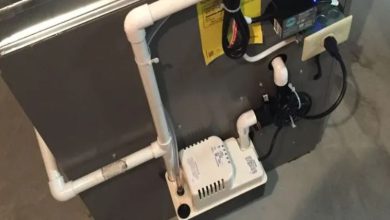How to do a structural analysis of any infrastructure

Structural analysis of a building refers to an examination of the material composition, arrangement, and external environment surrounding a structure. Structural engineers, analysts, and designers are responsible for evaluating buildings’ safety concerning their strength, durability, and impact resistance. The steps explained below will show how to perform structural analysis for buildings and other infrastructures. Whether you are building your own home or are working in a construction company, or a student in a premier STAAD.Pro Course in Delhi. This quick guide will be helpful for you.
Important steps of structural analysis
- Study the Existing Solution
The first step in structural analysis is to study the existing solution. The existing solution could be a building or any structure that is already built or in existence. You need to identify all components of the structure and determine how they work together to make up this structure. You will also need to identify any problems that may arise from the current design or construction process. In this step, you will also need to get a good understanding of your client’s needs and desires. Once you have a detailed understanding of their goals and objectives, you can begin to design a solution that meets those needs.
- Model the Current Solution
This is the step where the hours you have spent in the best STAAD Pro Course in Pune or elsewhere pay off. Once you have studied the existing solution, you will need to model it in a reliable software program as if it were a real building. This will help you visualize how everything works together and how each component can affect other components within it. This can also help give you an idea of what type of building or structure would be best suited for your needs at this time.
3 . Analyze Your Options For Designing The New Building/Structure
After modeling and studying your existing solution, it is time to analyze your options for designing a new building/structure that would work better for your needs at this time. You should look into different types of buildings, styles of architecture, and materials available when creating this new structure design so you can find something that meets all of your needs while also being cost-effective.
- Create the model of a new solution
The next step in any building design is to create an idea of the system you want to build. There are many ways of doing this, but one of the most common is to develop a model that shows how your proposed building will work in its environment. This can be done with simple diagrams or more complex models that show how people will enter and exit the building, how they will access different parts of the building, and where they will do their work.
- Create the model of a physical environment
Once you have established what your new system looks like, you need to plan its location relative to other buildings, roads, and utilities such as water, electricity, and gas pipes. The model can also help guide you through planning permissions for your project by showing where existing buildings need to be moved or removed for your new structure to fit neatly into an existing area or addressing the environmental concerns.
- Evaluation of the alternatives
This is the step where you evaluate all of the methods and figure out which one is best for your project. You will also be able to see if there are any problems with some of the methods and what needs to be fixed for them to work properly.
- Selection of the Best Method
This is one of the most critical steps of structural analysis and design, which is why even the best lecturers at the most reliable STAAD.Pro Course In Delhi or elsewhere, spend hours teaching their students how to make critical decisions at this juncture. Several factors could govern your trade-off decisions. Some of these include safety, client requirements, cost efficiency, energy efficiency, and government regulations. Based on all these factors, you can select the best set of alternatives.




